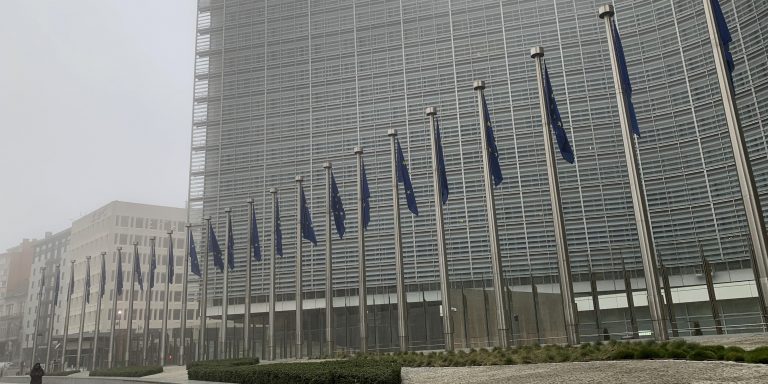INTELBRIEF
April 22, 2022
IntelBrief: How Will the European Security Architecture Evolve to Meet the Threat Posed by Russia?

Bottom Line Up Front
- To date, the most poignant geopolitical result of Vladimir Putin’s ill-fated and unprovoked invasion of Ukraine has been to unite NATO countries and forge new thinking across the European security architecture.
- The invasion of Ukraine has also spurred the Pentagon to adjust, allocating more time, energy, and resources into planning for a defense of NATO’s eastern flank.
- Beyond the headline grabbing technologies that Western nations are providing, Ukraine also needs a steady supply of more quotidian military assistance, including rifles, grenade launchers, and ammunition.
- With the West focused on the rise of China, recent Russian revanchism was a stark reminder that under Putin’s leadership, Moscow will remain aggressive and unpredictable and should not be overlooked.
To date, the most poignant geopolitical result of Russian President Vladimir Putin’s ill-fated and unprovoked invasion of Ukraine has been to unite NATO countries and forge a new approach across the European security architecture. The West is inundating Ukraine with sophisticated weaponry, to include anti-ship missiles, unmanned aerial vehicles, and howitzer artillery systems, in addition to ammunition, vehicles, and other weapons. Beyond the tactical aspects of the conflict, on a strategic level, Moscow’s belligerence has led directly to Sweden and Finland preparing to submit applications for membership to NATO. In response to the recent announcement, the Kremlin threatened with nuclear saber rattling in an attempt to intimidate Stockholm and Helsinki. Both Sweden and Finland would be critical force multipliers to NATO, bringing high-end intelligence capabilities, manpower, and significant firepower to the alliance. Finland’s accession in particular would extend the northern flank of NATO and provide a more robust maritime presence in the Baltic Sea.
The invasion of Ukraine has also spurred the U.S. Department of Defense to adjust, allocating more time, energy, and resources into planning for a defense of NATO’s eastern flank. Inevitably, this will forge even closer partnerships between the Pentagon and the Baltic states. It has already led to the deployment of more U.S. troops to Romania, Poland, Germany, and Greece. The Ukraine crisis is likely to increase the sense of urgency for NATO countries to step up training for offensive and defensive cyber operations, as well as to continue training Ukrainian soldiers in the cyber realm. More broadly, both chairman of the Joint Chiefs of Staff Gen. Mark A. Milley and Air Force Gen. Tod D. Wolters, the current head of U.S. European Command (EUCOM), are in favor of a more permanent U.S. troop presence in Eastern Europe. It is also now evident that Putin’s invasion has caused many Western leaders to rethink their approach toward Russia. In this sense, Russia’s invasion of Ukraine has been entirely counterproductive and strategically disastrous for Moscow.
Other NATO countries are also moving rapidly to think creatively about aiding Ukraine’s military. Slovakia provided S-300 long-range air defense systems already familiar to Ukraine’s troops. The Czech Republic pledged to send Soviet-made tanks and infantry fighting vehicles. In the meantime, Ukrainian President Volodymyr Zelenskyy has pleaded with NATO countries for aircraft, including MiG-29 fighter jets, but to no avail. For the next phase of this conflict, especially as Ukraine fights a bloody conventional war in the Donbas region, its forces will require armored vehicles, long-range surface-to-air missiles, and artillery. The U.S. and the U.K. continue to supply crucial military assistance to Ukraine, including Switchblade drones and next generation light anti-tank weapons (NLAWs). Germany has promised to dedicate more funding to security and defense, although many believe Berlin could and should do more to cut off Russian energy. But beyond the headline grabbing technologies that Western nations are providing to Kyiv, Ukraine also needs a steady and sustainable supply of more quotidian military assistance, including rifles, grenade launchers, and ammunition.
With so many Western countries focused on the rise of China, recent Russian revanchism was a stark reminder that under Putin’s leadership, Moscow will remain aggressive and unpredictable and should not be overlooked. Russia’s previous actions in Georgia, Crimea, and Syria reflect the impunity with which Moscow has acted for the last decade and a half. The status quo security posture across Europe simply will not suffice if NATO is to remain capable of meeting the challenges from Russian aggression. Military readiness, joint training exercises, and a focus on interoperability will remain critical areas of focus for NATO. For two decades, U.S. Central Command (CENTCOM) was the nucleus of attention as the U.S. military waged counterinsurgencies in support of host-nation governments in Iraq and Afghanistan. Chinese military modernization has meant that Indo-Pacific Command (INDOPACOM) has been a focal point of U.S. foreign policy and decision-making, especially with high-profile announcements related to the Quad and the AUKUS deal. But now, EUCOM is front and center, making the case that Russian aggression will remain a top-tier threat for the foreseeable future, which will necessitate more resources and capabilities to meet the challenge.